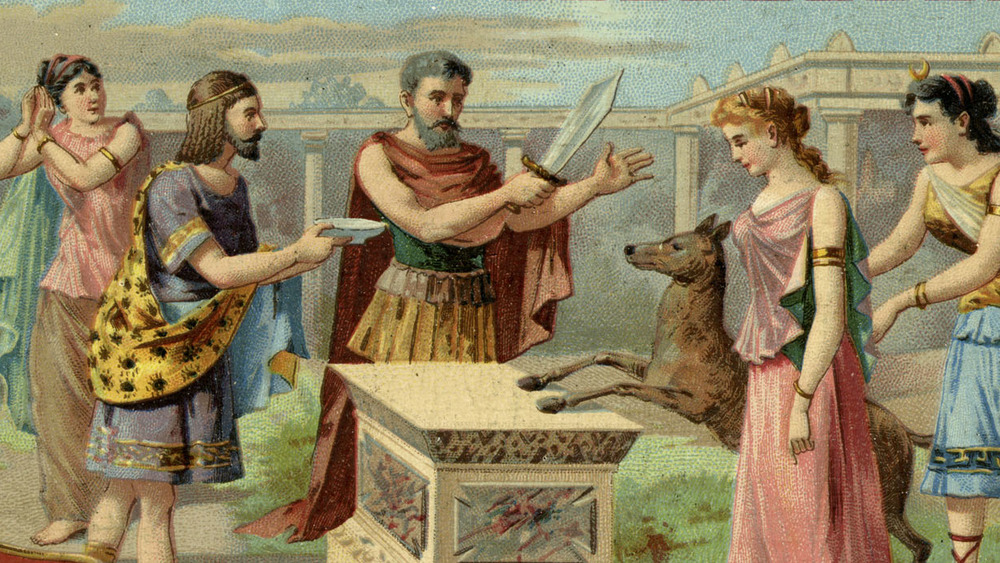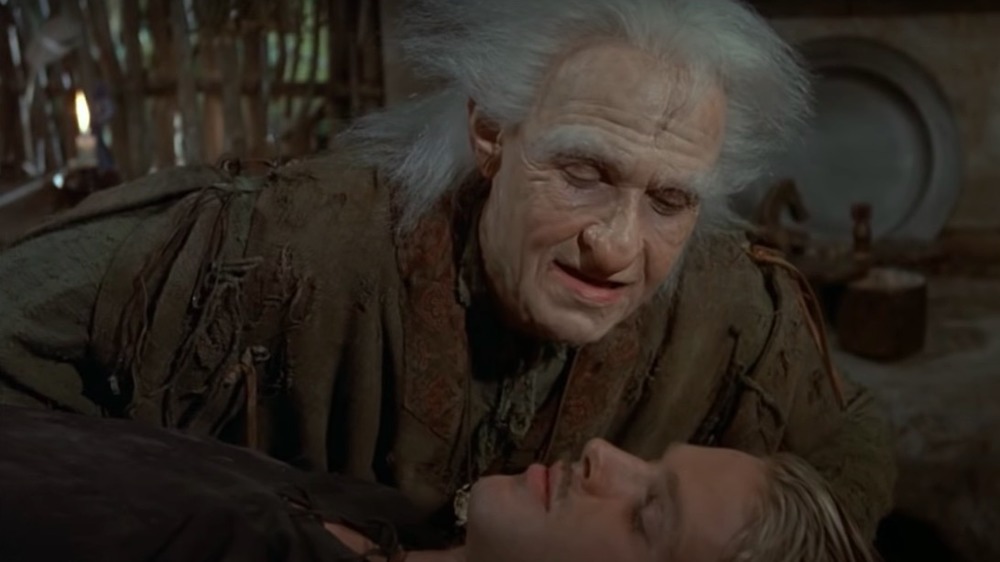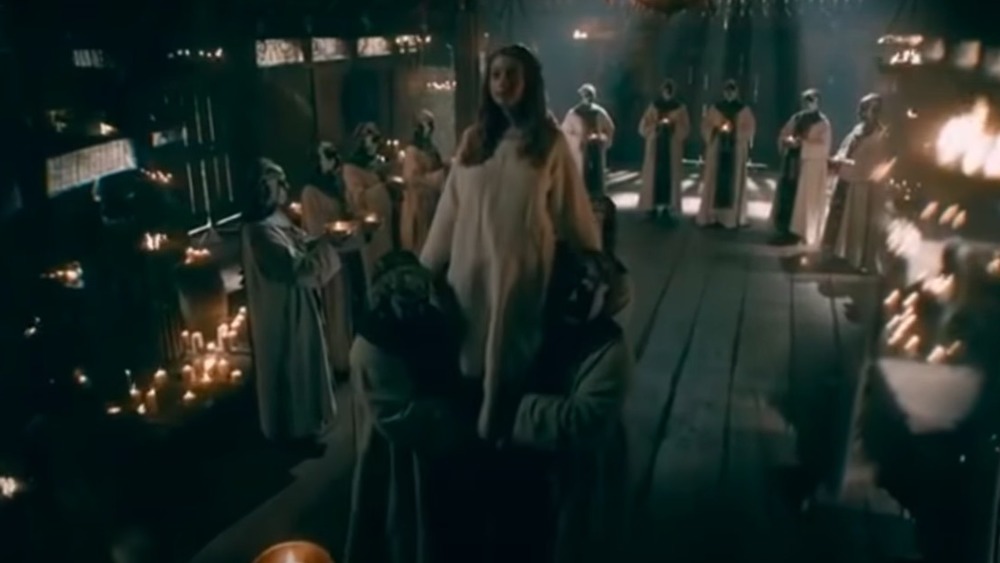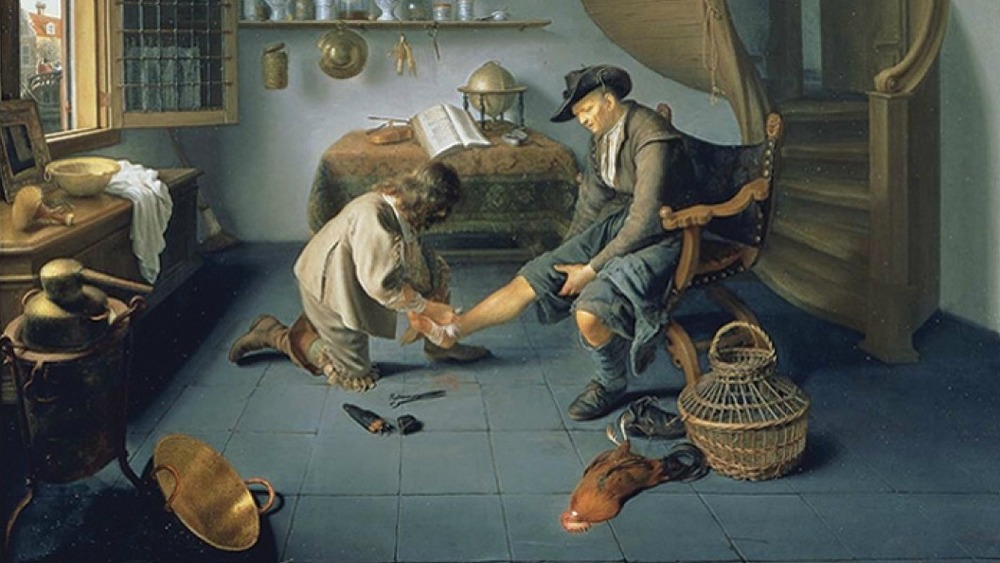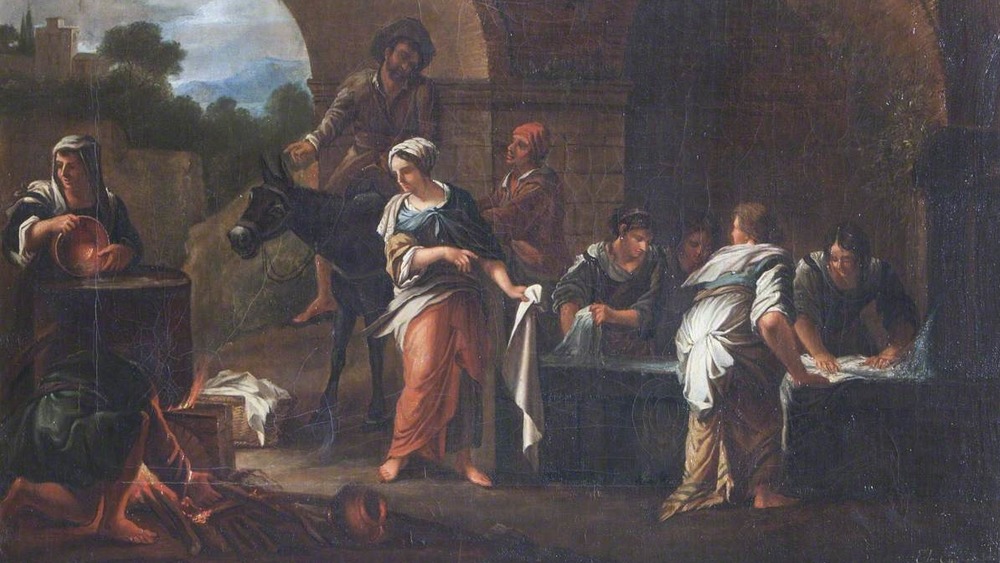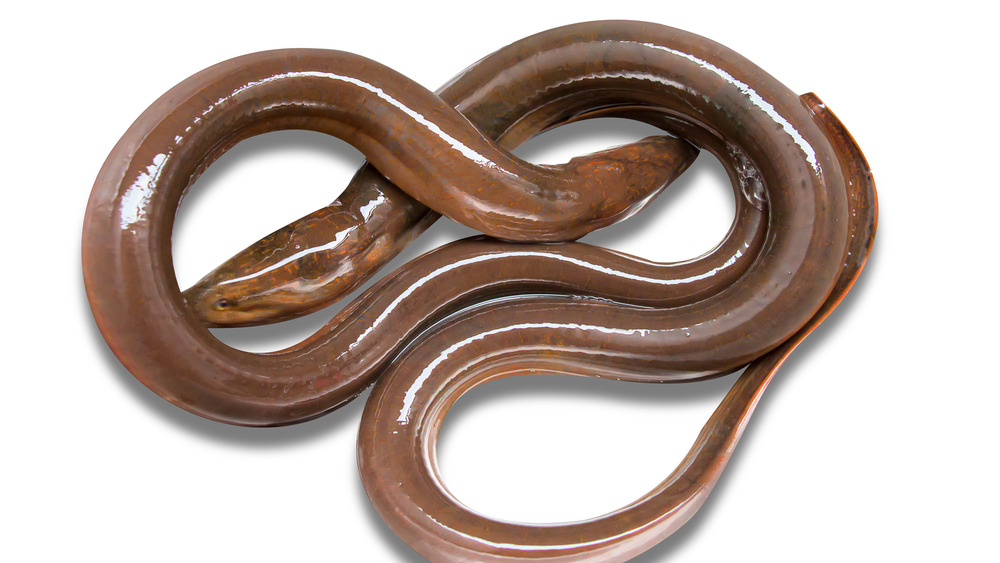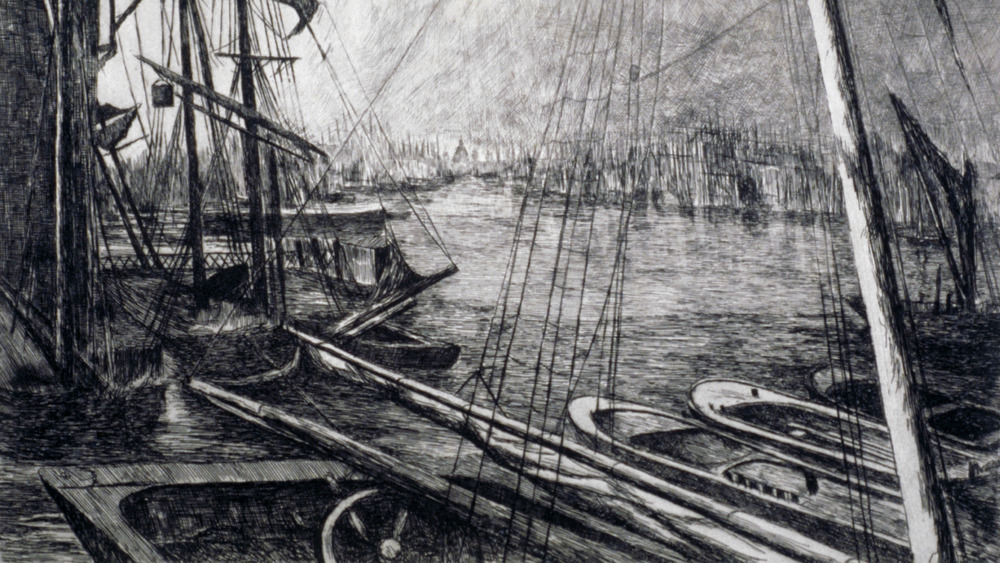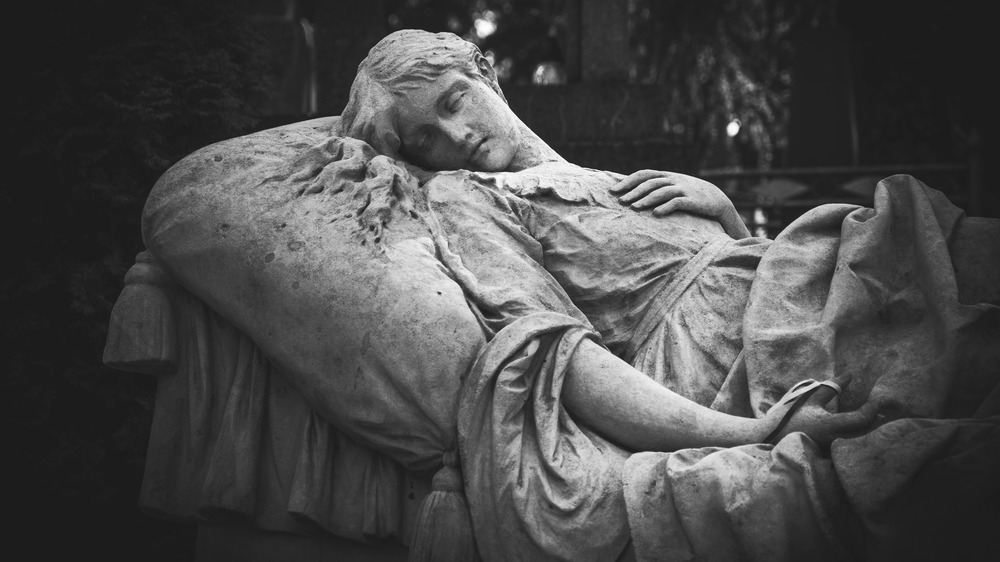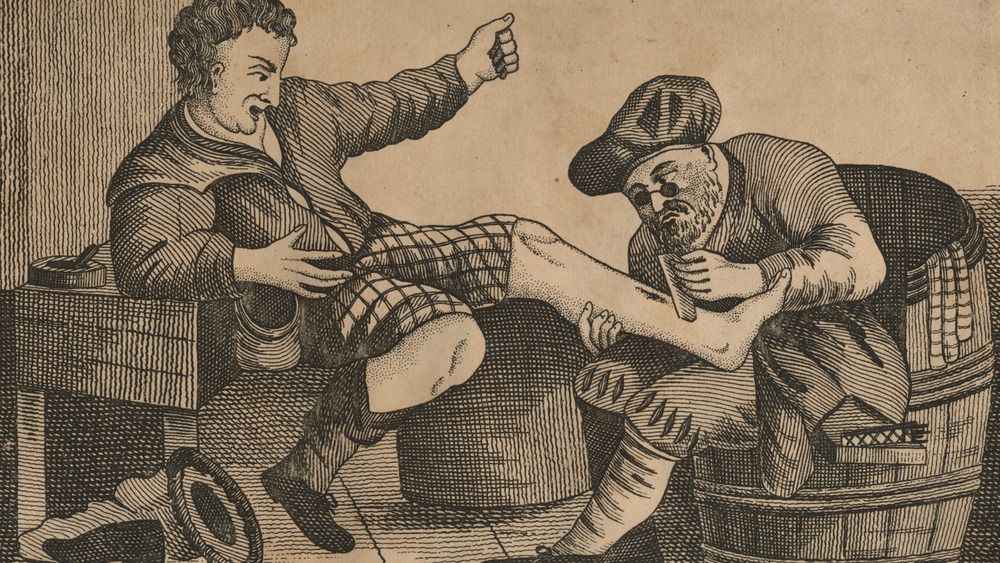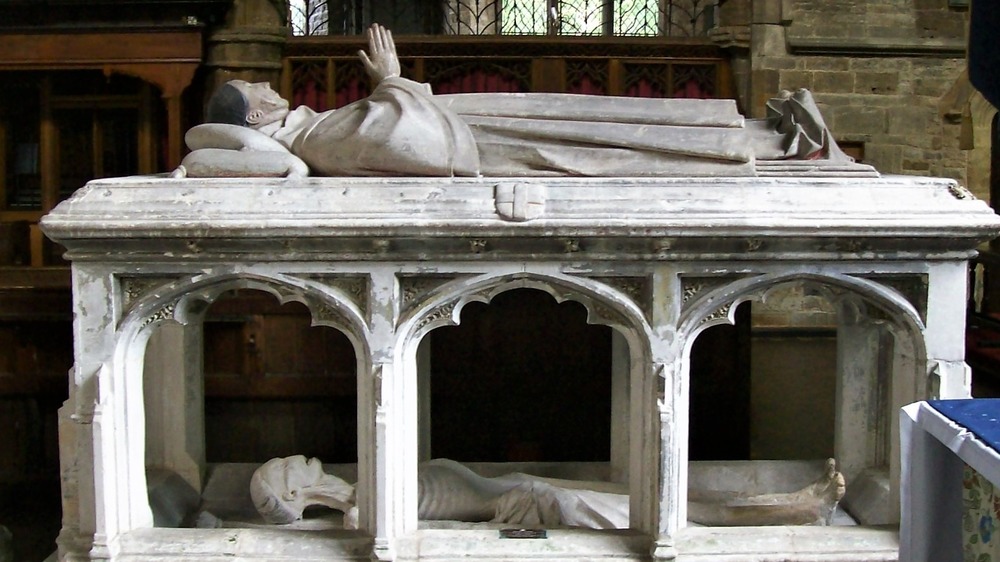Creepy Things That Were Considered Normal 1,000 Years Ago
Modern people aren't exactly without our flaws, but for the most part we're less willfully creepy than our forebearers. Sure, there are a lot of people who still can't be bothered to wash their hands after using the toilet, and there are evidently loads of people who send unsolicited photos of certain body parts to total strangers, but at least we collectively understand that these things are not normal and as normal people, we try to call out the worst offenders.
A thousand years ago, though, there were a lot of super creepy things that people did that were considered just another day at the rodent-infested hovel, or the castle, or whatever drafty and unpleasant structure it was you found yourself living and or working in. This was partly due to people's not very sophisticated understanding of, like, everything and partly due to people just making stuff up because it was the only way they felt like they could control their not-very-controllable existence on planet Earth. So sit down and poor yourself a nice glass of poo water, here are some of the creepiest things people thought were totally normal 1,000 (or so) years ago.
Whodunnit? Why not just ask the corpse?
Ask any four-year-old if corpses can solve their own murder, and the answer will be, of course not. Ask a modern forensic scientist and the answer will probably be "kind of," since clues found on a corpse quite frequently lead to a suspect, but that's not really the same thing as corpses solving their own murders.
Well, 1,000 years ago, people did actually think that corpses could speak, in a sense, anyway. According to National Geographic, the practice was known as "Cruentation," and it was basically what people did because they didn't know about DNA and they were otherwise pretty hopeless at things like gathering evidence and interviewing witnesses and caring whether or not they found the actual perpetrator or not. It was more important to execute someone (anyone) than it was to make sure you were executing the right person.
In those days, people believed that dead people were actually only "mostly dead," which means that Miracle Max wasn't really a radical thinker. Early crime investigators thought that if you put a corpse into the presence of its killer, the body would start to bleed. Now, this makes for really dramatic forensics, but the problem was that corpses don't really bleed much after death, so this technique probably didn't lead to a guilty verdict very often. But never mind, there was always a lake they could throw the accused into instead, since buoyant people are clearly more guilty than the ones who sink.
Institutionally sanctioned murder
We like to imagine that human sacrifice was something that mostly happened many thousands of years ago, before people started to get an inkling that maybe the gods just aren't that into blood and severed heads. But 1,000 years ago, people in cultures all over the world were still practicing human sacrifice — notably some South American people like the Toltecs, and also the Vikings. According to the Museum of Denmark, the Viking blot sacrifices were a pretty regular thing right up until Christianity started to get a foothold around 1000 AD. Vikings would sacrifice people in exchange for stuff, so if you would have a blot sacrifice if you needed good weather for your crops, or if you wanted to do well in a raid, or if your History Channel series was suffering from declining ratings.
India had its own human sacrifice practice, which was popular from about 550 CE through the 18th century. Called "sati," it was the expectation that if a widowed woman did not have any surviving children, she should just throw herself onto her husband's funeral pyre and burn to death, you know, so as not to become a burden to anyone. In the early years of this horrific practice, sati was something a woman did willingly, but at its peak it was a requirement. Don't want to burn to death with your husband's corpse? Too bad, here's a match. Sati was eventually outlawed, though occasionally there are reports of it happening even today.
You could have a haircut and a triple bypass at the same time
Okay so they didn't exactly do triple bypasses 1,000 years ago but still, if you needed surgery you didn't go to a physician, you went to a barber. Because, you know, scissors?
Evidently people thought that a person who was skilled at cutting hair would also be skilled at cutting human flesh. According to Ancient Origins, physicians were exclusively reserved for the upper-class, which let's be honest is sort of the way things are headed in the United States these days, but anyway. A proper physician was way, way too educated to touch blood or God forbid the broken limbs of a dirty peasant, so he'd just visit sick rich people and go, "Yes, you're sick, you should swallow a bottle of mercury. Now please give me money."
The barber/surgeon, on the other hand, would handle the care of regular people. It was his job to set broken bones, lance infected wounds, treat injuries, and if he was skilled enough, saw people's limbs off. And give them a nice pompadour while he was at it. The really freaky thing about all of this is that physicians were properly educated and accredited at a university and did practically nothing except advise, while the folks who did the hands-on stuff that could kill you if it went wrong basically learned it all on the job. Modern medicine may have its problems, but dang.
Pee for everything
Today, we believe very strongly that pee belongs in a toilet. Or if you're a dude and there's someone else in the bathroom, off the edge of the back deck. But 1,000 years ago, people actually thought pee was good for stuff.
According to Smithsonian, this dates at least as far back as Roman times, when people would wash their clothes in pee. So good news, if your cat pees in your clean laundry that makes it cleaner! No really, pee was considered so vital to the proper care of clothing that cities would set up barrels on the street for people to pee into, and then they would collect the pee and take it to the public laundry to be put to good use.
This is obviously disgusting but not as crazy as you might think — urine contains ammonia, and ammonia is still commonly used as a cleansing agent. In fact, even after people invented soap, they still liked to use pee for the laundry because the ammonia was better at loosening up tough stains. It was also great at helping dye stick to cloth, so it became indispensable to the textile industry. As late as the 16th century, people were still collecting pee specifically as a "mordant," or a treatment that cloth makers could apply to fabric to ensure bright, long-lasting color. Sadly, Smithsonian fails to note how they eventually got the smell out. Because cat pee is forever.
I'm losing my hair and teeth but my face looks young and pasty
Queen Elizabeth I sort of popularized the close-to-death look, but she didn't invent it. Lead-based makeup was a thing from ancient Egypt all the way through the 18th century, until people finally figured out that the reason they looked so crappy in old age was because their makeup made their skin a permanently bizarre color and probably was also responsible for their hair and teeth falling out.
According to National Geographic, lead makeup was popular with wealthy women because they believed pasty-white was a youthful look. Because come on, who doesn't want to look like a sickly child who was raised in a basement? Anyway, the lead-based makeup Elizabeth used was basically the same as Roman women used. Before that, the Egyptians used lead-based powders as eyeliner, which is what you see when you look at ancient portraits of pharaohs and other important people. Weirdly, Egyptian eye makeup did work to prevent eye infections, which was cool because most Egyptians didn't live past their 30s anyway so didn't have time to develop eye cancer or whatever other horrible diseases may have followed a lifetime of getting lead in your eyes.
Now granted, the heyday of lead-based makeup was more like 500 years ago, but no one who lived during the 11th century would have likely thought lead-based anything was especially weird, since the tradition had already been around for a very long time.
Sorry I'm a little short this month, here's an eel
Bartering isn't really a thing anymore. Maybe amongst friends, but it's not like you can pick some apples from the tree in your backyard and take them down to the Apple store to swap for an iPad or anything, though let's agree it would be super cool if you could. 1,000 years ago, though, currency wasn't something everyone had, so if you needed food or goods you had to find other things you could use for money. You know, like eels.
Yes, according to Time Magazine, people in England actually used eels for currency. In fact, by the Middle Ages there were distinct rules about how to count eels — if you had 25 eels that was a "stick," and if you had 10 sticks that was a "bind." So an Apple iPad might be worth, say, 10 binds and a couple of sticks. Or more.
The importance of eels to the economy of England dates all the way back to the 8th century, and eels even have a prominent place in 11th century record books, which actually seem to suggest that people paid their rent with eels more often than they did with coins. So why eels? Well, monasteries were big landholders in those days, and collecting rent in eels meant that the monks would never go hungry. Also, feasts thrown by the king often featured eels, so the nobility needed large quantities of them quite often.
Would you like a glass of poo water?
One popular movie trope has British folks circa 1,000 or so years ago tossing buckets of poop into the street, usually from at least the second floor, you know, so we can all laugh at the poor dude who happened to be walking by at exactly the right moment. Happily, this really is just a trope. According to Slate, there's not actually much evidence that people did this — it's not like simply being alive 1,000 years ago made you incapable of understanding that poop is gross and no one wants to step in it, especially if it belongs to someone else. But that doesn't mean that people who lived 1,000 years ago knew much about the potential of poop to transmit awful diseases, especially if it gets into a major water source, like the Thames for example.
City dwellers who lived in Europe 1,000 years ago did have to get rid of their poop, and like many modern humans they ascribed to the dubious policy "out of sight, out of mind," which means they were totally cool with just dumping all of their waste into a nearby river, where it would be washed downstream and become someone else's problem, at least in theory. Of course, since everyone was doing it, it eventually became everyone's problem, but it still took a rather disgustingly long time for people to realize that maybe the Thames wasn't the best place to dump raw sewage.
Can't we just cuddle instead?
Even ancient people were smart enough to know where babies come from, but what they didn't know was exactly how to do consequence-free snu-snu. And let's face it, the desire for consequence-free snu-snu is as old as time.
Unfortunately, the stuff that people tried to do to prevent pregnancy 1,000 years ago was mostly really kind of borderline gross, or sometimes flat-out gross. Here's one that's not super awful but still highly ill-advised: Using a lemon as a cervical cap, which is a practice that dates all the way back to the second century and was still in use during the days of the infamous swinger Casanova. There was also the paste made of crocodile poop and honey that ancient Egyptian women would put in their you-know-wheres, but we aren't going to talk about that since it was thankfully way more than 1,000 years ago and also we just don't want to.
There were also condoms, which sound pretty refreshingly normal compared to crocodile poop, but according to Bustle they were made out of animal guts because rubber and latex weren't actual things 1,000 years ago. And as a bonus, animal gut condoms were reusable, so that's not disgusting at all. If you were put off by any of these things, don't worry ... you could also drink a lead infused potion which probably was actually pretty good at making you infertile.
Graveyards weren't just places you went to visit deceased loved ones
We like to imagine that the people of the distant past were not super, err, romantically adventurous. They were polite, and chivalrous, and everything they did in the bedroom was within the bonds of matrimony and 100 percent approved by the church.
Actually, kinkiness is as old as time, and for as long as there have been eels to pay the tab there have been ladies of the evening willing to indulge customers' weird fantasies. And one of those weird fantasies was common enough that it persisted for centuries.
According to Ancient Origins, sex workers who hung around in cemeteries usually did a pretty brisk business. But why? Well, in the Middle Ages cemeteries were kind of like party central — townspeople would set up graveyard markets and if you wanted to drink and gamble, you could settle down on your loved-one's grave for a beer and a game of dice and no one would think that was weird at all. But even before that, from the Roman times onward, prostitutes found they could do dual business in cemeteries: mourners-for-hire by day, and other stuff at night. Their customers were grave-diggers, widowers, and people who had, um, weird graveyard fetishes. And this wasn't just a passing fad, either, this quirk continued to be a thing for centuries, reaching its peak in 14th century England when the Black Death was killing a lot of people and totally messing with everyone's boundaries.
Surgery, um, sucked
Today we really could not imagine undergoing a surgical procedure without the use of anesthesia. Not just because it would totally suck for the person going under the knife, but also because it would totally suck for the surgeon who would somehow have to perform precise maneuvers around vulnerable blood vessels and organs while the patient was writhing like a recently beheaded snake.
But the need for surgery did not evolve alongside the ability to keep someone in a state of pain-free unconsciousness. People recognized the need for surgical procedures thousands of years ago, before anyone could even guess that it might be possible to make surgery pain-free. So if you were unfortunate enough to need surgery you had a couple of choices: Die of whatever ailed you or have surgery while wide awake and totally lucid. According to the University of Medicine and Health Sciences, the Greeks, Chinese, and other very ancient people did have some form of rudimentary anesthesia, but in Europe there were few reports of real attempts at pain relief until the early 13th century, when surgeons started to experiment with stuff like opium and mandrake. Up until then, if you needed surgery or god forbid you had to have your arm sawed off, you basically got a bottle of whisky and a piece of wood to bite down on and then you prayed that you would pass out from the pain before it got super awful.
Adorning your tomb with a sculpture of yourself as a decaying corpse
Call this one kind of a bonus because it was really a thing more like 700 years ago rather than a full thousand, but it's just weird enough that we can't not mention it. According to Atlas Obscura, around the time of the Black Plague, wealthy people would have their bodies placed in double-decker tombs. On the top was an effigy of the deceased as he or she appeared in life, and on the bottom was an effigy of the deceased as he or she probably appeared at that very moment, as a horrible decaying corpse.
Today we really don't like to imagine what happens to bodies after they've been in the ground for a while (at least not the bodies of people we know — the bodies of horror movie characters are totally fair game), hence the weird but still common practice of embalming. In those days, having yourself interred in a "cadaver tomb" was kind of a nod to the grim reaper, an acknowledgement that we all eventually turn to dust. Or maybe it was just a way for people to get to see what they'd look like as a Walking Dead zombie. Because this wasn't something that your loved ones would do for you after you'd already died — cadaver tombs were usually designed while the person was still alive, so you could gaze upon your own rotting face and then give the sculptor the thumbs up.
